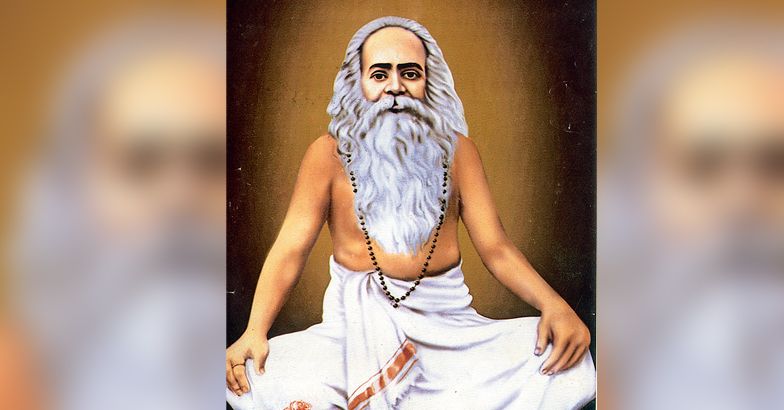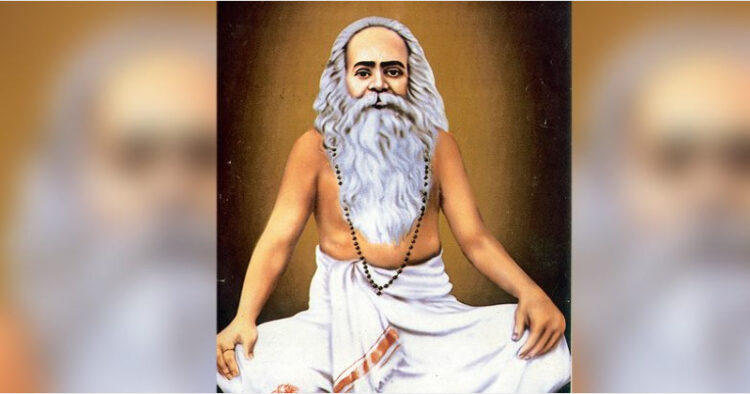
Today marks the birth anniversary of the great sage, Vedanti, author and social reformer Paramabhattaraka Vidyadhiraja Sree Chattampi Swami Ji, who taught Swami Vivekananda the meaning of ‘Chinmudra’ during the latter’s Kerala visit. “Here I met a remarkable man”, wrote Swami Vivekananda after meeting Chattampi Swamikal at Kochi.
Swamiji was born in Kannanmool, Thiruvananthapuram in 1853. Fondly known as Kunjan Pillai, Swamiji earned his name ‘Chattampi’, which means ‘monitor’ during his school days. After his education, he served as an accountant in the Government Secretariat. He learnt the art of ‘Hat yoga’ from Thaikkattu Ayyavu, a Tamil Pandit and hat-yogi. He also learnt Tamil Vedic works from Pandit Swaminatha Desika. He became a disciple of the famous pandit and scholar Subha Jatapathikal. He travelled throughout South India and attained knowledge in different languages and religions. On return, he obtained expert training in the art of yoga from Admananda Swamikal.
Chattampi Swamikal along with Sree Narayana Guru, led the Hindu renaissance movement in Kerala, to reform caste-ridden Hindu society of the late 19th century. He ardently opposed forced religious conversion and paid the missionaries back in the same coin, by writing ‘Kristumata Chedanam’, a critique of Christianity in 1890 as a rejoinder to many Christian Missionary books slandering Hindu Gods and scriptures. This scholastic-polemical work, written in accordance with the classical Indian Purva paksha tradition, ripped apart the logical fallacies in Christian theology, using his expertise in Tarka Shashtra.
In order to resist forced religious conversion and fight slanderous missionary campaign against Hindu Dharma, Chattampi Swamiji formed an army of intellectual warriors in the late 19th – early 20th centuries and made them well versed in his work ‘Christumata Chedanam’ and sent them to all quarters of Kerala to counter Missionaries’ propaganda and thwart proselytisation.
“Here I met a remarkable man”, wrote Swami Vivekananda when he met Chattampi Swamikal at Ernakulam. He made this remark on hearing the clarifications on ‘Chinmudra’ from Chattampi Swamikal.
Pracheena Malayalam, Vedadhikara Niroopanam, Sree Chakra Poojakalpam, Jeevakarunya Niroopanam, Adibhasha etc. are the other major works of Chattampi Swamikal. Vedadhikara Niroopanam is considered to be his masterpiece which argued that Vedas are for all Hindus.
In his famous work Vedadhikara Niroopanam, Swamiji argued and established that Vedas are not just meant for Brahmins, but for all Hindus. He proved that even Sudras had the right to learn Vedas as knowledge is essential to all people like food and water and that nobody has the right to deny them.
Swamiji established Sree Vidhyadhiraja Theerthapada Paramabhattraka Ashram in 1089 (ME) (1914 AD). “Ascetic and holy man who tried to break the Brahmin hold on the performance of religious ceremonies. Attacked caste and associated with Izhavas. Said to have taught yoga to Sri Narayana Guru,” wrote historian Robin Jeffri.














Comments